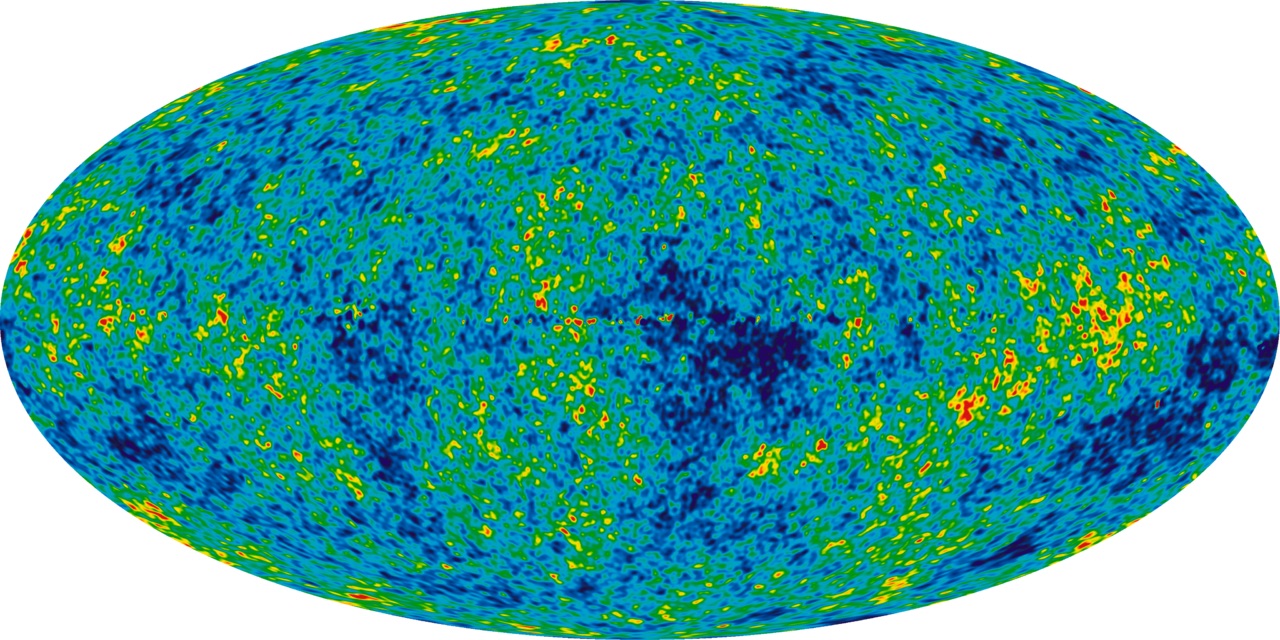
The cosmic microwave background (CMB, CMBR), in Big Bang cosmology, is electromagnetic radiation as a remnant from an early stage of the universe, also known as "relic radiation". The CMB is faint cosmic background radiation filling all space. It is an important source of data on the early universe because it is the oldest electromagnetic radiation in the universe, dating to the epoch of recombination. With a traditional optical telescope, the space between stars and galaxies (the background) is completely dark. However, a sufficiently sensitive radio telescope shows a faint background noise, or glow, almost isotropic, that is not associated with any star, galaxy, or other object. This glow is strongest in the microwave region of the radio spectrum. The accidental discovery of the CMB in 1964 by American radio astronomers Arno Penzias and Robert Wilson was the culmination of work initiated in the 1940s, and earned the discoverers the 1978 Nobel Prize in Physics. Cosmic Microwave Background
The cosmic microwave background (CMB) is the thermal radiation left over from the time of recombination in Big Bang cosmology. In older literature, the CMB is also variously known as cosmic microwave background radiation (CMBR) or "relic radiation." The CMB is a cosmic background radiation that is fundamental to observational cosmology because it is the oldest light in the universe, dating to the epoch of recombination. With a traditional optical telescope, the space between stars and galaxies (the background) is completely dark. However, a sufficiently sensitive radio telescope shows a faint background glow, almost exactly the same in all directions, that is not associated with any star, galaxy, or other object. This glow is strongest in the microwave region of the radio spectrum. The accidental discovery of CMB in 1964 by American radio astronomers Arno Penzias and Robert Wilson was the culmination of work initiated in the 1940s, and earned the discoverers the 1978 Nobel Prize. Cosmic Microwave Background, Wikipedia
See Also
Celestial
Celestial Radiation
Cosmic Forces
Cosmic Rays
Laws of Being - Annotated
Microwave
